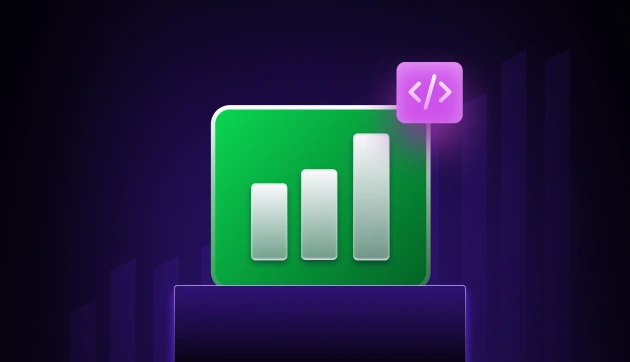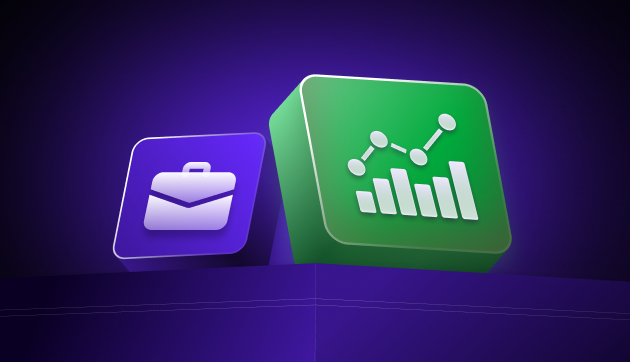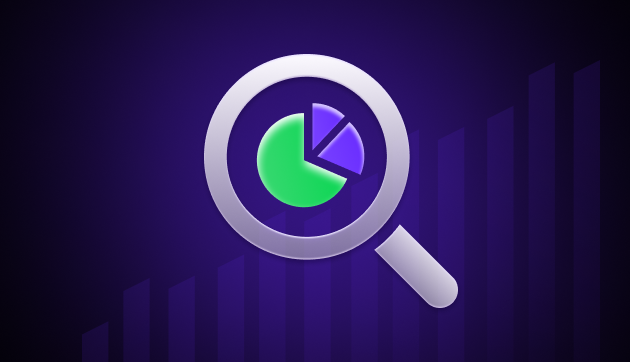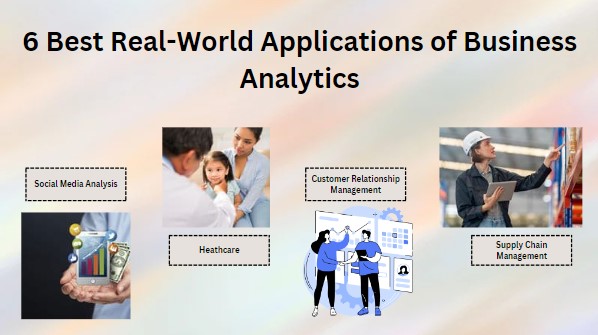![Top 35 Data Analyst Interview Questions and Answers [2025] 1 Post thumbnail](https://www.guvi.in/blog/wp-content/uploads/2024/11/Top-35-Data-Analyst-Interview-Questions-and-Answers.png)
Top 35 Data Analyst Interview Questions and Answers [2025]
Mar 29, 2025 8 Min Read 2789 Views
(Last Updated)
Data analytics skills give job seekers a real edge these days. Studies show more than 60% of employers look for candidates who can analyze data. Data analytics has become accessible to more people in every industry, and it remains one of today’s most promising career paths.
This makes data analysis interview questions a hot topic and a confusing one too, I’m sure.
Hence, I have put together 35 hand-picked data analyst interview questions and answers to help you ace your data analyst interviews. These questions cover simple concepts like SQL and Excel.
They also dive into advanced topics like statistical analysis and data visualization tools like Tableau. The questions are hosted by difficulty level, so you can prepare confidently, whatever your experience level may be.
Table of contents
- Beginner-Level Data Analyst Interview Questions and Answers
- What is data analysis, and why is it important?
- What is the difference between Data Mining and Data Profiling?
- Define Data Wrangling in Data Analytics.
- What are the various steps involved in any analytics project?
- What common problems do data analysts encounter during analysis?
- Which technical tools have you used for analysis and presentation purposes?
- What are the different types of data?
- Explain the difference between qualitative and quantitative data.
- What is primary vs. secondary data?
- What are the most common file formats used for storing data?
- What is a data pipeline, and why is it important?
- What is the difference between correlation and causation?
- What are Key Performance Indicators (KPIs)?
- What is an outlier, and how do you detect it?
- What are the different types of data sampling techniques?
- Intermediate-Level Data Analyst Interview Questions and Answers
- What is a p-value and how is it used in statistical analysis?
- Explain the Central Limit Theorem and its importance in data analysis.
- What is the difference between Type I and Type II errors in hypothesis testing?
- What are the different types of data analysis? (Descriptive, Diagnostic, Predictive, Prescriptive)
- Explain the ETL (Extract, Transform, Load) process.
- What are SQL joins, and how do they work?
- What are common data cleaning techniques?
- Explain key statistical measures (mean, median, mode, standard deviation, correlation).
- What is A/B testing, and why is it used in data analysis?
- How do you handle missing or duplicate data?
- Advanced-Level Data Analyst Interview Questions and Answers
- How do you evaluate the performance of a predictive model?
- What is the difference between overfitting and underfitting? How do you address these issues?
- How do you handle imbalanced datasets in your analysis?
- What is the role of feature engineering in predictive analytics?
- What is the difference between supervised and unsupervised learning?
- Scenario-Based & Case Study Data Analyst Interview Questions and Answers
- You discover that customer satisfaction scores have dropped 10% over the last quarter. How would you analyze this situation?
- Describe a situation where you had to work with messy, incomplete data. How did you approach it?
- How would you evaluate the effectiveness of a new marketing campaign?
- How would you communicate complex data findings to non-technical stakeholders?
- A competitor has launched a similar product at a lower price point. How would you analyze the potential impact?
- Concluding Thoughts…
- FAQs
- Q1. What skills are essential for a successful data analyst in 2025?
- Q2. How can I prepare for a data analyst interview?
- Q3. What are the main steps in a data analysis project?
- Q4. How do you handle challenges like missing or inconsistent data?
- Q5. How do you communicate complex data findings to non-technical stakeholders?
Beginner-Level Data Analyst Interview Questions and Answers
Entry-level data analyst interviews test your knowledge of basic concepts that are the foundations of data analysis. You’ll face questions about data processes, tools, and methods. Here are the most common beginner-level questions that will help you shine in your next interview.
![Top 35 Data Analyst Interview Questions and Answers [2025] 2 data analyst interview questions and answers](https://www.guvi.in/blog/wp-content/uploads/2025/03/1-11.png)
1. What is data analysis, and why is it important?
Data analysis is the process of collecting, organizing, and interpreting raw data to extract meaningful insights. Businesses use data analysis to make informed decisions, optimize processes, and improve performance. For example, companies analyze customer purchasing patterns to develop targeted marketing strategies.
2. What is the difference between Data Mining and Data Profiling?
Data Mining helps find patterns and relationships in large datasets to predict outcomes. It combines machine learning, statistical analysis, and database systems to uncover hidden patterns.
Data Profiling looks at data in existing sources and collects statistics about it. It helps you learn about the data’s structure, content, relationships, and derivation rules. Teams usually do data profiling before data mining as part of data preparation.
3. Define Data Wrangling in Data Analytics.
Data Wrangling transforms raw data into a usable format that helps make better decisions. The process includes fixing missing values, removing duplicates, standardizing formats, and reshaping data for analysis. Data analysts spend 60-80% of their time on wrangling, but it’s vital for accurate results.
4. What are the various steps involved in any analytics project?
Analytics projects follow these key steps:
- Understanding the Problem: Define organizational goals and plan solutions.
- Collecting Data: Pull relevant data from various sources based on priorities.
- Cleaning Data: Remove unwanted, redundant, and missing values.
- Exploring and Analyzing Data: Use visualization tools and statistical methods.
- Interpreting the Results: Find patterns, trends, and insights.
Each step builds on the previous one to create value from data.
5. What common problems do data analysts encounter during analysis?
Data analysts often face these challenges:
- Duplicate records that skew results
- Getting meaningful data at the right time
- Data storage and purging issues
- Data security and compliance with regulations
- Incomplete or inconsistent data sources
Success requires both technical skills and careful planning.
6. Which technical tools have you used for analysis and presentation purposes?
Data analysts should know these key tools:
- Database tools: MS SQL Server, MySQL for relational databases
- Visualization tools: MS Excel, Tableau for reports and dashboards
- Statistical analysis tools: Python, R, SPSS for modeling and exploratory analysis
- Presentation tools: MS PowerPoint for showing results
Your skill with these tools shows you can handle technical analysis tasks.
7. What are the different types of data?
Data is broadly classified into three types:
- Structured Data: Organized in a tabular format (e.g., SQL databases, Excel sheets).
- Unstructured Data: Lacks a predefined format (e.g., emails, videos, social media posts).
- Semi-structured Data: Has some organization but is not strictly tabular (e.g., JSON, XML files).
8. Explain the difference between qualitative and quantitative data.
- Qualitative Data: Descriptive data that cannot be measured numerically (e.g., customer feedback, survey responses).
- Quantitative Data: Numerical data that can be measured and analyzed statistically (e.g., sales figures, temperature readings).
9. What is primary vs. secondary data?
- Primary Data: Collected directly from the source (e.g., surveys, interviews, experiments).
- Secondary Data: Already collected by other sources (e.g., research papers, government reports, company databases).
10. What are the most common file formats used for storing data?
Some widely used formats include:
- CSV (Comma-Separated Values): Plain-text format for structured data.
- JSON (JavaScript Object Notation): Stores semi-structured data, commonly used in APIs.
- SQL Databases: Used for storing relational data in structured tables.
- Excel: Provides spreadsheet capabilities with advanced functionalities.
11. What is a data pipeline, and why is it important?
A data pipeline is a system that automates the movement of data from one place to another, often involving data extraction, transformation, and loading (ETL). It ensures data is cleaned, processed, and stored efficiently for analysis.
12. What is the difference between correlation and causation?
- Correlation: A relationship between two variables, but it does not imply that one causes the other.
- Causation: One variable directly influences another. For example, ice cream sales and drowning incidents may be correlated (both increase in summer), but one does not cause the other.
13. What are Key Performance Indicators (KPIs)?
KPIs are measurable metrics that indicate the success of an objective. Examples include:
- Customer Retention Rate: Percentage of customers retained over a period.
- Sales Growth: Percentage increase in sales revenue.
14. What is an outlier, and how do you detect it?
An outlier is a data point significantly different from other observations. It can be detected using:
- Box Plots: Identify data points outside the interquartile range.
- Z-Scores: Measures how far a value is from the mean in standard deviations.
15. What are the different types of data sampling techniques?
Common sampling methods include:
- Random Sampling: Each data point has an equal chance of selection.
- Stratified Sampling: Divides data into groups before selecting samples.
- Systematic Sampling: Selects every nth data point.
Intermediate-Level Data Analyst Interview Questions and Answers
Data Analyst interviews at the intermediate level test your technical expertise and problem-solving abilities more deeply. Interviewers expect you to show both theoretical knowledge and hands-on skills in data analysis concepts of all types.
![Top 35 Data Analyst Interview Questions and Answers [2025] 3 2 9](https://www.guvi.in/blog/wp-content/uploads/2025/03/2-9.png)
1. What is a p-value and how is it used in statistical analysis?
P-value calculates the probability of getting results at least as extreme as those observed, assuming the null hypothesis is true. Statistical analysis uses it to show how likely a dataset occurred by chance.
To cite an instance, a p-value less than the significance level (usually 0.05) lets you reject the null hypothesis. This means there’s only a 5% chance your results happened randomly. Data analysts use p-values to learn whether their findings have statistical weight or just show random variation. This makes them vital to draw valid conclusions from data experiments.
2. Explain the Central Limit Theorem and its importance in data analysis.
The Central Limit Theorem stands as statistics’ cornerstone. It states that samples of enough size from any population will have means that follow a normal distribution, whatever the original population’s shape.
This theorem matters because it:
- Let’s analysts make population inferences from sample data
- Helps calculate confidence intervals for population parameters
- Gives theoretical backing to many statistical tests
- Works even when the original population isn’t normally distributed
Like in retail customer satisfaction analysis, the theorem helps draw meaningful insights even when initial satisfaction ratings don’t follow a normal distribution.
3. What is the difference between Type I and Type II errors in hypothesis testing?
Hypothesis testing can lead to two error types:
Type I error (false positive) happens when analysts reject a true null hypothesis. This means finding an effect that doesn’t exist.
Type II error (false negative) occurs when you keep a false null hypothesis. This means missing a real effect in your data.
Data analysts must understand these errors because they represent different risks. A pharmaceutical study shows this well – Type I error might approve an ineffective drug (wasting resources), while Type II error could reject an effective treatment (harming patients). Analysts balance these risks through significance levels and statistical power.
4. What are the different types of data analysis? (Descriptive, Diagnostic, Predictive, Prescriptive)
Data analysis is categorized into four main types:
- Descriptive Analysis: Focuses on summarizing past data to identify trends and patterns. For example, a sales report that shows monthly revenue growth.
- Diagnostic Analysis: Examines past data to understand the reasons behind trends. For instance, an e-commerce company is analyzing why customer churn has increased.
- Predictive Analysis: Uses historical data and machine learning models to predict future outcomes, such as forecasting product demand.
- Prescriptive Analysis: Suggests the best course of action based on predictive analysis. For example, an AI-based recommendation engine advising marketing strategies.
5. Explain the ETL (Extract, Transform, Load) process.
ETL stands for Extract, Transform, and Load, a process used to gather data from multiple sources, clean it, and store it in a database or data warehouse.
- Extract: Data is collected from sources like databases, APIs, or spreadsheets.
- Transform: The data is cleaned and formatted (e.g., removing duplicates, handling missing values).
- Load: The processed data is stored in a target system, ready for analysis.
For example, in business intelligence, ETL is used to consolidate customer data from different platforms into a central data warehouse.
6. What are SQL joins, and how do they work?
SQL joins combine records from two or more tables based on a related column. The main types of joins are:
- INNER JOIN: Returns only matching records in both tables.
- LEFT JOIN: Returns all records from the left table and matching records from the right table.
- RIGHT JOIN: Opposite of LEFT JOIN; returns all records from the right table and matching records from the left.
- FULL OUTER JOIN: Returns all records when there is a match in either table.
For example, joining a “Customers” table and “Orders” table helps find which customers placed orders and who did not.
7. What are common data cleaning techniques?
Data cleaning ensures accuracy and consistency in datasets. Key techniques include:
- Handling missing values (e.g., filling with mean/median, dropping null values).
- Removing duplicates to prevent redundant records.
- Standardizing data (e.g., converting dates to a common format).
- Correcting errors such as misspellings and incorrect data types.
For instance, before running a customer segmentation analysis, cleaning messy customer records improves the model’s accuracy.
8. Explain key statistical measures (mean, median, mode, standard deviation, correlation).
- Mean: The average value in a dataset.
- Median: The middle value when data is sorted.
- Mode: The most frequently occurring value.
- Standard Deviation: Measures the dispersion of data points from the mean.
- Correlation: Shows the relationship between two variables (positive, negative, or no correlation).
For example, analyzing salary distributions often requires median instead of mean, as extreme values (outliers) can skew the mean.
9. What is A/B testing, and why is it used in data analysis?
A/B testing is a statistical method used to compare two versions of a product or campaign to determine which performs better.
- Process: Users are randomly split into two groups (A and B), exposed to different versions, and their responses are analyzed.
- Example: An e-commerce company tests two landing page designs to see which drives more sales.
It helps businesses optimize marketing campaigns, UI/UX design, and product features.
10. How do you handle missing or duplicate data?
- Missing Data: Handled by methods such as removing rows, imputing with the mean/median, or using predictive modeling to fill gaps.
- Duplicate Data: Identified using SQL (DISTINCT or GROUP BY) or Python (drop_duplicates() in pandas) and removed.
For example, in customer analytics, duplicate records can cause incorrect insights, so they must be cleaned before analysis.
The intermediate-level data analyst interviews test more than just concept knowledge. You need to show how these ideas solve ground business problems. Practice explaining complex statistics in clear terms. Your communication skills matter just as much at this career stage.
Advanced-Level Data Analyst Interview Questions and Answers
Senior data analyst roles and specialized positions need candidates to demonstrate expertise in advanced statistical concepts, model evaluation, and sophisticated problem-solving. These questions test your technical knowledge and your ability to apply complex analytical techniques to ground business challenges.
![Top 35 Data Analyst Interview Questions and Answers [2025] 4 3 8](https://www.guvi.in/blog/wp-content/uploads/2025/03/3-8.png)
1. How do you evaluate the performance of a predictive model?
The evaluation of predictive models needs metrics that match specific model types and objectives. Regression models use metrics like RMSE (Root Mean Square Error) to measure prediction accuracy. Classification models depend on precision, recall, F1-score, and AUC-ROC.
Cross-validation is a basic evaluation strategy that divides data into complementary subsets for training and testing. This method gives a detailed validation of model performance across different data segments.
My model evaluation process includes:
- Statistical validation through techniques like goodness-of-fit tests
- Business rule validation that lines up with domain knowledge
- External data validation using independent datasets
- Data profiling that verifies input quality
Business objectives should guide metric selection. A model with slightly lower accuracy but better explainability might work better in certain business situations.
2. What is the difference between overfitting and underfitting? How do you address these issues?
Models that perform exceptionally well on training data but fail with unseen data are overfitting. They memorize training data instead of learning underlying patterns.
Underfitting happens when models are too simple and can’t capture data patterns. This leads to poor performance on both training and testing data.
You can fix overfitting through:
- Making the model simpler by removing less relevant features
- Using regularization techniques (L1, L2)
- Stopping model training early
- Getting more training data or using data augmentation
- Using ensemble methods like random forests
Underfitting solutions include:
- Making models more complex
- Adding relevant features
- Reducing regularization strength
- Using sophisticated algorithms that capture complex relationships
The sweet spot between bias and variance helps develop models that work well beyond training data.
3. How do you handle imbalanced datasets in your analysis?
The first step with imbalanced datasets is finding the level of imbalance and when to use rebalancing techniques. This helps pick the right methods.
Here are effective ways to handle imbalanced data:
- Downsampling reduces the majority class instances to match the minority class
- Upweighting gives higher weights to minority class instances during training
- SMOTE creates synthetic instances of the minority class
- Ensemble methods work specifically with imbalanced data
- Cost-sensitive learning assigns different costs to misclassification
Dataset characteristics, imbalance level, and business problems determine technique selection. Fraud detection needs careful handling of imbalanced data since missing fraudulent transactions is costly.
4. What is the role of feature engineering in predictive analytics?
Feature engineering makes a huge difference in model performance by turning raw data into meaningful features. This process helps represent underlying problems better.
Common feature engineering techniques are:
- Feature transformation applies mathematical functions
- Feature extraction creates new features from existing ones
- Feature selection finds informative variables
- Feature scaling normalizes features
Feature engineering works best as an ongoing process. Regular improvements boost model performance without changing algorithms. Customer churn prediction benefits from features that show engagement patterns over time rather than basic interaction counts.
5. What is the difference between supervised and unsupervised learning?
These learning approaches use data differently for model development.
Supervised learning needs labeled data with known outcomes. Algorithms learn to connect input features to output labels, which works great for classification and regression. Decision trees, linear regression, and neural networks are good examples of structured prediction.
Unsupervised learning finds hidden patterns in unlabeled data. These algorithms excel at clustering, dimensionality reduction, and finding anomalies. K-means clustering and principal component analysis (PCA) are classic examples.
Data availability and analysis goals help choose between supervised and unsupervised learning. Sometimes, combining both techniques in a semi-supervised approach works best.
Scenario-Based & Case Study Data Analyst Interview Questions and Answers
Data analyst interviews now go beyond technical knowledge. Companies use scenario-based questions to see how you solve problems in real-life situations. These questions show how you think through business challenges.
![Top 35 Data Analyst Interview Questions and Answers [2025] 5 4 6](https://www.guvi.in/blog/wp-content/uploads/2025/03/4-6.png)
1. You discover that customer satisfaction scores have dropped 10% over the last quarter. How would you analyze this situation?
The first step is to check data quality and look for any collection problems. Breaking down the data by location, claim type, and service representative helps pinpoint where scores dropped the most. Looking at past trends shows if this drop is seasonal or unusual. Running correlation tests with metrics like response times or claim resolution rates comes next. The final step is to show stakeholders visual results with practical recommendations.
2. Describe a situation where you had to work with messy, incomplete data. How did you approach it?
My experience with an insurance company’s customer survey data stands out. The data had many blank fields and mixed formats. I started by checking if the missing data followed any pattern or was random. Random gaps were filled using proper imputation methods. I made all data formats consistent and marked which values were originally missing. This clear method kept the data reliable while using all available information.
3. How would you evaluate the effectiveness of a new marketing campaign?
The first step is setting clear KPIs that match campaign goals – conversion rates, customer acquisition costs, or ROI. A/B testing helps compare results against a control group. Looking at both quick wins, like immediate sales and long-term metrics like customer lifetime value, gives a complete picture. This data helps decide whether to improve or expand the campaign.
4. How would you communicate complex data findings to non-technical stakeholders?
Understanding your audience’s needs and knowledge comes first. The focus should be on business results rather than technical details. Clear visuals help tell the story without overwhelming anyone. Using simple language instead of statistics jargon works better. Listening to questions during presentations helps address concerns right away and makes sure everyone understands what the data means for their decisions.
5. A competitor has launched a similar product at a lower price point. How would you analyze the potential impact?
Starting with our market share data, price elasticity, and customer segments gives us the baseline. Creating models shows how different customer groups might switch based on price sensitivity. Looking at how similar competitive moves worked out in the past adds context. This analysis helps suggest price changes, feature updates, or targeted marketing to keep at-risk customers – all with measurable expected results.
Concluding Thoughts…
Mastering technical concepts and ground problem-solving skills is vital for data analyst interviews. These 35 questions explore everything in data analysis – from simple data cleaning to advanced statistical analysis. They will prepare candidates like you for a variety of interview scenarios.
A candidate needs more than just technical expertise to excel in interviews. Questions based on real scenarios test how well you can explain complex concepts simply to solve business problems. This piece helps you develop these significant skills through each practice question.
Business decisions now rely heavily on data analysis.
These interview questions and detailed answers will boost your confidence in your next interview. Note that regular practice and ground application of these concepts will make you stand out as a competitive candidate in the data analysis field.
FAQs
Key skills for data analysts include critical thinking, problem-solving, attention to detail, statistical knowledge, and domain expertise. Proficiency in data visualization tools, programming languages like Python or R, and database management is also crucial.
Prepare by reviewing fundamental concepts like statistical analysis, data cleaning techniques, and visualization methods. Practice explaining complex ideas simply, work on real-world projects to build your portfolio, and be ready to discuss how you’ve applied data analysis to solve business problems.
The main steps typically include understanding the business problem, analyzing data requirements, collecting and understanding data, data preparation and cleaning, visualization, analysis, and deployment of insights or models.
Approach data challenges systematically by first assessing the nature and extent of the issue. For missing data, consider techniques like imputation or deletion based on the data’s characteristics. For inconsistencies, standardize formats and create clear documentation of any changes made to maintain data integrity.
Focus on translating technical insights into business language, use clear visualizations to illustrate key points, and tailor your presentation to the audience’s priorities. Avoid jargon, emphasize actionable insights, and be prepared to explain the implications for decision-making in simple terms.































Did you enjoy this article?